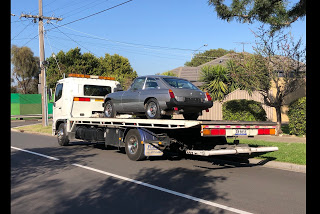
by David Maynard | Dec 6, 2020 | Repair
Related posts ==> Other Repairs
After purchasing a MGB GT LE interstate I was looking forward to picking it up from the transport yard. It was at this point that a problem with the car had been revealed. The car was difficult to start and when it did, it would only travel about 2 km before stopping. Regretfully, the car coming home unceremoniously on the back of a tilt tray truck.
After getting the car home the alternator and voltage regulator were checked. Both were ok.
A local auto electrician identified the fault as a burnt-out ignition relay, which, in an MGB, also controls the blinkers and some dash gauges, causing issues with those components..
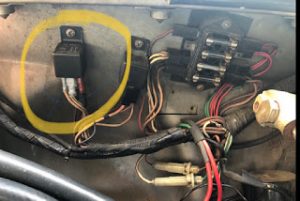
The replacement part cost $5.00 but caused a lot of grief and some unexpected costs including a new battery, tow truck and a fairly large invoice from the auto electrician. I checked the symptoms of a faulty ignition relay which described almost exactly what the car was doing.
Symptoms of a faulty ignition relay include:
- The car suddenly stalls while operating – yes
- Car not starting – yes
- Dead battery – yes
- Intermittent issues starting the car – yes
- Starter stays on after engine started – no
- Clicking sound coming from the starter – yes
If your MGB displays any of these symptoms then check your ignition relay. The issue of the blinkers failing and dash lights coming on were caused by some of that wiring in my MGB also passing through the ignition relay.
RECOMMENDATION:
Search online for symptoms and how to resolve them. If I had known what the cause was I could have saved a lot of grief AND money.

by David Maynard | Dec 6, 2020 | MGB GT LE, Review
Related Posts ==> Faulty Ignition Relay
Whilst thinking through purchasing options for an MGB, I decided I have limited time to allocate to any kind of restoration project. Accordingly, the criteria for my first MGB experience was either a car that had received a lot of restoration work or one that was original and in very good condition, requiring minimal work.
I had also established a preference for a GT. Living in South East Queensland, with a subtropical climate and long hot summers, a roadster would be too hot.
I had spotted at least one MGB GT that had received a lot of restoration work but I was a little slow in the uptake and that opportunity slipped away fairly quickly. Although I didn’t get the opportunity to look at or demo the vehicle, it was clearly a quality car that had received some high quality work. Speaking to the owner over the phone confirmed the extent of restoration work carried out. Given the very reasonable price, it is no wonder the car sold very quickly.
My next inspection was a roadster listed locally. Although I was looking for a GT, the intention of looking at this roadster was to get a better feel for what to look for. That turned out to be a smart exercise. Although the price was quite low, it was also a substandard example of an MGB and revealed the types of issues to look for. It was a regular drive for the seller, no effort was made to present the car well, it was clearly not well looked after and likely had mechanical issues to match, had obvious signs of rust in the normal places (sills, doors etc) and I couldn’t even test drive the vehicle as the seller didn’t have the key.
The next example I looked at was the car I eventually purchased. It was a reasonably priced MGB GT LE UK edition listed in Melbourne Vic. At the time Victoria was in the middle of a COVID-19 lockdown. Given severe restrictions on movement around town locals couldn’t carry out any inspections. I engaged a local mechanic to carry out a pre-purchase inspection. Based on that inspection I purchased this vehicle for the following reasons:
- price was very good
- the seller had carried out limited but key repairs including a new steering rack and new brake system components
- the seller maintained a file of work carried out, including all work carried out by the previous owner
- the car had for many years been a club car and been very well cared for and maintained
- condition of the car was clearly very good and confirmed by the pre-purchase inspection
- mechanically the car was in very good condition
- in the words of the pre-purchase inspection mechanic, the vehicle was “faultless”
My expectation on pickup from the depot was to jump in the car and drive it home. Sadly, this was not the case as some issues started to reveal themselves at the depot.
Firstly, the car would not start. I had a new battery fitted but still no start. The car eventually started and I left the deport with my wife travelling behind me. It travelled about 500 meters and stopped – just cut out as it had run out of fuel. As the seller mentioned it was low on fuel I assumed the tank was empty. I subsequently put some fuel in and it started again. Another 500 meters later it stopped again in a similar fashion.
At that point, my wife and I agreed she would drive back to the transport depot and request a tow truck to pick it up and deliver home. My wife and the yard manager returned with some more fuel as there were no tow trucks available at the time. Thinking it was low on fuel the yard manager commenced topping up the tank but it quickly overflowed. So the problem was obviously not fuel. It started again so we decided to give it another shot at driving approximately 15km home. Buoyed by the car driving 5 km further I thought it was going to make it home but sadly it stopped again. It seemed to stop as if it had run out of fuel and some odd electrical things were going on like blinkers not working, dash charge light coming on etc.
The car ended up getting home unceremoniously on a tilt tray truck. A mechanic friend and I were able to carry out some basic checks. Believing it may have been the alternator and or associated voltage regulator, we removed that and had it checked but nothing wrong with that.
I then took it to a local auto electrical workshop and the problem was eventually tracked down to a faulty and burnt out ignition relay. That relay also controls the blinkers and some dash gauges, hence the other odd electrical symptoms also resolved.
It was an interesting learning curve as this little $5 part caused a lot of grief and some unexpected costs (new battery, tow truck and auto electrician).
See this post for further details on symptoms and resolution of faulty ignition relay.
Faulty Ignition Relay
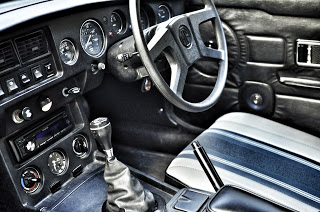
by David Maynard | Dec 6, 2020 | MGB GT LE, Review, Uncategorized
Related Posts ==> MGB GT LE 1980
The limited edition MGB’s were interesting cars. Although they didn’t poses any special technical or performance related features, each one offered very unique cosmetic features. There were a couple of different limited edition MGB’s made.
1. Jubilee, 1975MGB
2. Limited Edition LE (1979-1980) – US edition
3. Limited Edition LE (1980) – UK edition.
MGB Jubilee:
In May 1975 Abingdon produced 750 specially prepared MGB GTs to celebrate what British Leyland thought to be the MG Car Company’s fiftieth anniversary of the production of MG Cars. Features included some technical changes to meet new US safety standards plus cosmetic features including colour (green only), gold decals and V8 alloy wheels.
MGB LE – US Edition:
In 1979 British Leyland intended to produced 500 limited edition (LE) model roadsters for the US market but due to demand ended up producing 6682. The US LE model was similar to the UK LE model but with different fittings and colours – black only.
MGB LE – UK Edition:
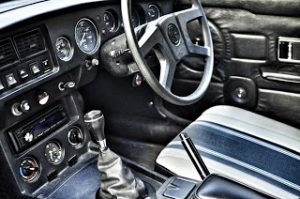
Unique interior of MGB GT LE – UK Edition
These cars were built at Abingdon in 1979/80 and were in fact the last MGs to be built at the famous factory before its closure in October 1980. A total of 1,000 Limited Edition MGBs were produced, 420 in Roadster form, 580 in GT form with the very last of each model going to the Heritage Trust Museum at Gaydon to add to their collection of historic vehicles.
Features included some technical changes and unique cosmetic features including colour (Pewter for GT model and bronze for roadster), stripe decals and Triumph Stag alloy wheels.

by David Maynard | Dec 6, 2020 | MGB GT LE
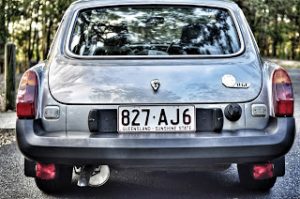
This page is maintained by brothers Terry and David. Following is a brief background of their MG Experiences.
David:
I enjoy a number of hobbies, not so for my wife though. She will tell you “I try to find a hobby but nothing works for me. But not David, he just bounds along, discovers a new interest and bam, he has a new hobby”. So at age 61, I developed a keen interest in acquiring an older car to tinker with. Not necessarily a restoration project as time is still a precious commodity and not to be messed with.
Terry:
My twin brother Terry had recently purchased a 70’s MGB roadster which rekindled a passion that started as a teenager. Over the years he’s enjoyed owning, tinkering and working on classic cars. Enjoying a number of discussions about his MGB experiences, I decided to launch into my own MGB experience.
But why an MGB?
I looked at various options. For example, a VW Beetle or Kombie, both of which I had owned in my youth, and other models familiar in the 60’s and 70’s. I realised that MGB’s offered many benefits over the other options. I concluded that MGB’s were the classic car of its era, equivalent to our current day Toyota Corolla. In other words, there are lots of them around and an abundance of parts and upgrades available. In addition, there is a very strong enthusiasts platform. Local car clubs are very active and online material for the MGB is abundant worldwide. What a great option for launching into a classic car experience.
My first MGB experience:
A 1980 MGB GT LE – a limited edition model released at the very end of the MGB production story. This page is intended to document this journey, provide reviews, practical guidelines of ownership, maintenance, upgrade tips, fun stories and stories from the trenches.
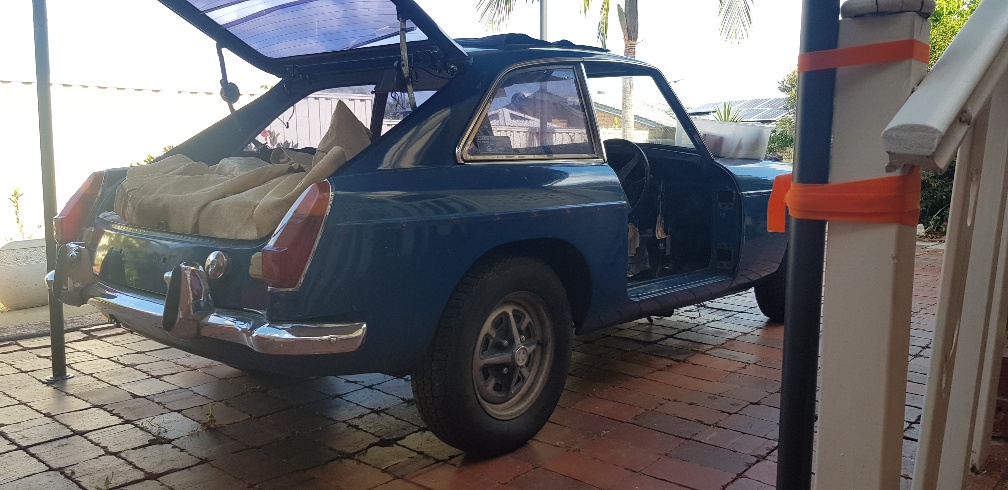
by Liz Maclean | Dec 6, 2020 | Review
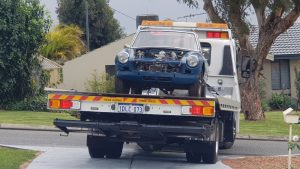
Back story
After purchasing my first MG, a 1971 MGB L Roadster, interest in all things MG progressively consumed more and more of my thoughts, energy and time. In our teenage years, my brother and I would visit car dealers and drive sports cars that appealed to us. However, at age 19 I bought a Datsun 2000S Fairlady and had it for 10 years. Most of that time it was my only car but In a moment many times regretted, I sold it. Buying the MGB Roadster was like coming home for me, picking up where the Datsun 2000S left off.
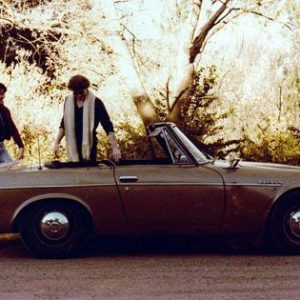
A similar growing interest in MG’s escalated with my brother buying a nice MGB GT LE UK edition. My son around this time shared his desire to learn how to work on cars. On YouTube, he subscribed and followed a restoration project on, of all things, an MGB GT. I knew his favourite car of all time is a 70’s Mach 1 Mustang and I learned specifically the fastback styling is what appeals to him. Furthermore, the MGB GT has the fastback styling he likes. That makes sense to me. Our conversation came around to my long-held soft spot for MGB GT’s with their pretty lines and ‘fastback’ styling. I recounted admiring a Teal Blue example in a car park many years ago and dreaming of owning one.
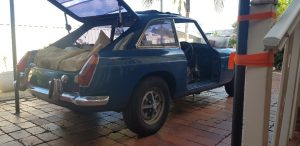
Providence
As providence would have it a Teal Blue MGB GT popped up for sale local to me. My son and I talked about getting it as a joint project car. In 2003 it had been taken off the road for some restoration work, the driveline had been rebuilt, motor, overdrive gearbox and diff. The alternator, twin Su’s, radiator and brake system with vacuum booster was rebuilt and accompanied with invoices for the work done. The interior was completely gutted and some exterior parts and engine parts in crates and boxes. The inevitable rags were stuffed into vulnerable engine orifices. Arrangements were made to view it. A deal was eventually struck and home came the Teal Blue GT unceremoniously on the back of a flatbed truck. The work that is done so far started 17 years ago, now it’s time to restore that classic raspy MGB exhaust note.
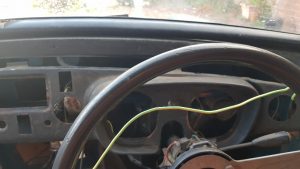
Where to start
Initially, I was overwhelmed. Where do I start with the boxes of parts, nuts, bolts and bits and pieces? The car was generally in a sorry state. For the sake of doing something, it seemed logical to start by cleaning it inside and out. The last date on the pile of receipts accompanying the purchase is 2007 and I assume the only thing that’s changed since then is the accumulation of dirt and dust.
The last few months I’ve spent sifting through the bits and pieces, researching online, and getting an idea of which direction the project should go. Firstly, one option is to take it down the path of restoration. I baulk at the amount of money involved to do that, as well as the amount of time it would take. Frankly, I want to see it up and running and driving down the road under its own steam, as does my son.
Secondly is an option I’d never heard of before and entirely not considered. I stumbled across Rat Rods which gave me the idea to simply refurbish the car. Essentially retain as close to the original car and patina as practically and aesthetically possible. For instance, Rat rods are a good example of this idea and it appeals to me to approach a classic MGB GT build in this way, especially one in Teal Blue.
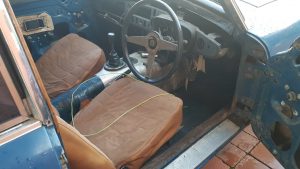
Goals
The goal is to build a reliable classic car to cope with the demands of an everyday driver that will take me to retirement and beyond. Moreover, I’d like to hook up to a homemade micro camper trailer to attend National club runs. Originally, the idea of a restoration project appealed to me. Now it’s clear I want to go with option two to refurbish the GT while preserving the original car and patina.
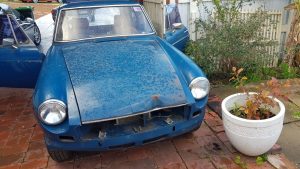
Talking it through with my son who calls the Teal Blue GT his inheritance totally agrees. For him, it was the only way he ever viewed it. Great news, the direction of the project is established, forward we go.
Watch this space…..















Recent Comments